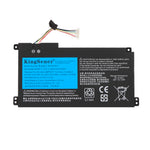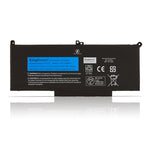You have no items in your shopping cart.
Where should you keep your AED?

In the case of a heart emergency, every minute and every second is crucial for saving a life. That's why it's best to have an automated external defibrillator (AED) readily available, as it plays a key role in saving lives. But do you know where to place your AED?
How can the placement of the AED be improved to ensure better accessibility and effectiveness of use? Next, we will do our best to answer these questions for you.
(1) The Importance of AED Placement
Sudden cardiac arrest can happen to anyone, anytime, anywhere, and it poses a threat to people's lives. If not rescued promptly, the survival rate will decrease by approximately 10% for every minute of delay.
However, since the average response time of EMS is 8-10 minutes, it is crucial to promptly locate and utilize an AED for rescue when medical personnel are unable to reach the scene in time. This is essential for saving the patient's life.
(2) Factors to consider when placing an AED
In order to position the AED more effectively, it is advisable to conduct a site assessment.
a.Identify high-risk areas
Identify areas of higher risk for cardiac emergencies, including locations where individuals are more likely to experience cardiac arrest. Some high-risk activities may involve physical exertion, which can increase the risk of cardiac arrest. Such as gyms, sports fields, or potentially hazardous workspaces. In addition, areas with a higher population of individuals aged 50 and above should also be considered.
b.Evaluate high-traffic areas
Focus on high-traffic areas where crowds tend to gather. Placing an AED in these areas increases the likelihood of its immediate availability during a cardiac emergency. Examples include easy access and visibility to cafeterias, auditoriums, gyms, etc.
c.Consider accessibility.
Ideally, the AED should be placed in a location that is easily accessible and visible, ensuring that it can be readily located and used at all times. Avoid placing the AED in locked offices or areas where access may not be possible during business hours. We aim to minimize the time it takes to obtain an AED and reduce any potential delays.

M5070A Replacement Defibrillator Batteries For Home Defibrillator M5066A M5068A 110300 M5067A CR123 3V Battery Cell
(3) How to properly place an AED?
After assessing the site, the AED should be placed in a convenient, visible, and accessible location.
a.Convenience
To effectively respond to cardiac arrest, the AED should be used within three minutes of the person losing consciousness. This means we need to determine the number and placement of AEDs based on the layout and size of the space. Therefore, we need to place the AED within a suitable distance in the area and ensure that it is accessible within 1.5 minutes from any location in the vicinity.
b.Visibility
Make sure the AED is highly visible and easily identifiable. Avoid hiding the AED in hard-to-find places, such as corners or behind closed doors. We can choose a prominent location and use attention-grabbing signage to ensure that the AED can be easily located in the event of an emergency.
c.Accessibility
The placement of the AED should enable us to obtain and use it quickly. Avoid storing AEDs behind concealed objects, in locked cabinets, or in other areas that require complex access procedures. In addition, the AED handle should ideally be no higher than 48 inches from the ground, and it should be adjustable to accommodate real-life conditions.
This ensures that individuals in wheelchairs or of varying heights can easily access and use the device. In addition, the AED can also be placed near the phone, making it convenient for us to make necessary emergency calls while also having easy access to the AED.
Optimal placement of the AED is a critical step in ensuring improved survival rates during cardiac emergencies. By conducting an on-site assessment, we can optimize the placement of AEDs and increase the likelihood of saving lives during critical moments. This assessment takes into account important factors such as convenience, visibility, and accessibility.
Finally, if you want to learn more about batteries, please visit:BatteryMall.com/support.
If you need more information about batteries related to medical products, please go to: batterymall.com medical-battery








